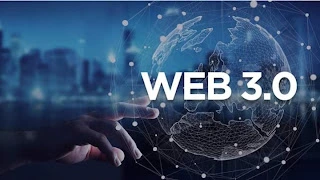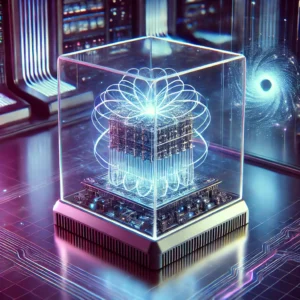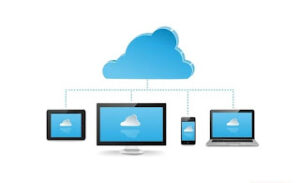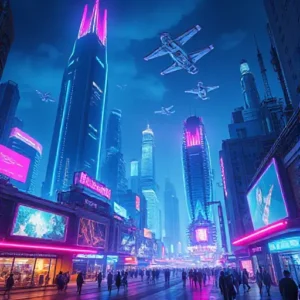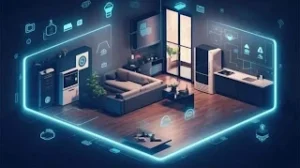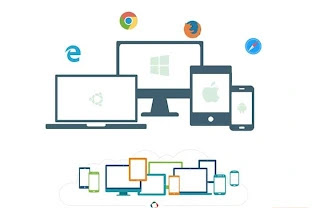Suppose you decide to go see a movie. Eat something after finishing the movie. Today you are in the mood to watch a comedy movie. And the food must be something spicy Mexican. You turn on the computer and open the web browser. Searched Google for cinemas, cinema halls and eateries around the hall as needed.
You want to know what movies are showing at the cinema near you. Read the movie synopsis to decide which one to watch out of several movies. Also, check if there are any Mexican restaurants around the hall. Also read some reviews to check what foodies think about this restaurant. All in all, you’ve checked out half a dozen websites before you even get out. All in all it took you half an hour to 40 minutes!
Internet experts believe that the next generation of the web, i.e. Web 3.0 (Three Zero), will make things like watching movies and finding food faster and easier.
You still have to type a lot of words to search for something. But in Web 3.0, you only need to search by typing one or two complex sentences, the rest of the work will be done by Web 3.0 itself.
For example, you might write, “I want to see a comedy movie, then eat at a good Mexican restaurant. What are my options?”
The Web 3.0 browser will analyze your question, then automatically search and add all possible answers. And will sort the results and present them to you.
Not only that, many experts believe that Web 3.0 can do much more. According to them, Web 3.0 will work like a personal assistant. When you search for something on Web 3.0, it will learn from that search what you are interested in.
The more you use the web, the more the browser will learn. Then you don’t have to ask very specific questions. In fact, all you have to do is ask a simple question like “Where should I go for lunch?” To answer, your browser will look at records of what you like and don’t like, consider your current situation, and then suggest a list of restaurants.
To better understand where the web is going in the future, we need to understand what the web was like before. Let’s explore the history and evolution of the web.
The Path Of Web 3.0
Among the buzzwords and jargons that have become popular with the general public about the Internet, the most familiar term is probably ‘Web 2.0’. Many people know the word but few know what it really means.
Some think it’s just a marketing ploy. The aim is to attract venture capitalists (who are interested in investing money in risky ventures) to invest billions in the website.
But that’s right, O’Reilly Media’s Dale Doughty didn’t have an exact definition when he coined the term. There was no definitive opinion on whether there was even such a thing as Web 1.0.
Still others insist that Web 2.0 is real. So what exactly is the matter?
.
Features of Web 2.0 in brief:
- Visitors have the ability to modify web pages: Amazon allows visitors to post product reviews on their website. The online form can be used on Amazon’s website. And a visitor can add any information they want to the web pages. Later other visitors can read that information.
- Using web pages to connect with other users: Social media like Facebook and MySpace have become quite popular because, through them, users can find each other and keep in touch with each other easily.
- Quick and efficient way to share content: YouTube is the perfect example. A user can create videos on YouTube and upload them to the site for others to watch in less than an hour.
- New Ways to Get Information: Internet users can subscribe to really simple syndication or RSS feeds of any web page. As a result, as long as there is an internet connection, the user will get regular updates of this site.
- Internet access without computers: Many people access the Internet through mobile phones and video game devices. Experts expect that consumers will soon be able to access the Internet through television sets and various other devices.
Think of Web 1.0 as a library. You may use it as a source of information, but you may not add to or modify information here in any way.
On the other hand, Web 2.0 is more like a large group of friends and acquaintances. From here you can get various information as well as talk, making your experience with others more beautiful and enriching.
There are still many criticisms of Web 2.0. But many are already starting to wonder what the future of the web will look like.
That’s right. How will Web 3.0? How different will the web be from the web we use today? Will there be a revolutionary change, or a subtle change where we won’t notice the differences?
How do Internet experts think the next generation of the World Wide Web?
Web 3.0
Internet experts think Web 3.0 will be like your personal assistant, knowing almost everything about you. And can answer any question by accessing all the information on the internet. Many compare Web 3.0 to a giant database.
Web 2.0 essentially connects people to people using the Internet. And Web 3.0 will connect people with information using the Internet. Some experts believe that Web 3.0 will replace the current Web, while others believe that it will remain a separate network.
This concept will be easier to understand with the help of an example. Let’s say you’re thinking of going on vacation somewhere. Want to go somewhere with warm weather and warm water. He fixed the budget for the trip at 2 lakh rupees. You want a nice place to stay, that doesn’t go out of your budget again. You also want a quality flight at a low cost.
Nowadays you need to do a lot of research to find the best travel options using web technology. First research the possible destinations, then decide which one is the best. Then again for this you need to visit two or three travel sites, comparing flight and hotel room rates from one to the other. Time must be spent searching many results from different search engines. This entire process may take several hours.
According to some Internet experts, with the help of Web 3.0, you can do everything from the comfort of your Internet. You can use a search service and further limit the scope of the search. The browser will then collect and analyze the data. will make it much easier for you to compare the results. Web 3.0 will be able to do this because it will have the ability to understand information.
All the search engines you are currently using don’t really understand what you are searching for. These search engines only search web pages for the keywords you type in to search. Even if the web page is gone, these search engines cannot understand whether it is relevant to your search. They just check if the keyword you searched for is present on the web page. For example, if you search by typing “Saturn,” you’ll get results about a planet and about a car manufacturing company. A Web 3.0 search engine, on the other hand, will look for your search keywords, as well as understand the “context” of the search.
As a result it will show you more relevant results and also other results related to the search term.
For the vacation travel example, if you search by typing “summer vacation destination under Rs 2 lakh”, the web 3.0 browser can also show you lists of fun activities or great restaurants related to the search results. It will consider the entire Internet, a huge database of information, to answer any question.
How Can Web 3.0 Do This?
No one knows which direction the technology of the future will take. But in the case of Web 3.0, most Internet experts agree on its general characteristics. They believe that Web 3.0 will provide users with a richer and more relevant experience.
Many also believe that, in Web 3.0, each user will have their own Internet profile based on their browsing history. Web 3.0 will make everyone’s browsing experience special by using this profile. That is, if two different people search the Internet with the same keywords using the same service, they will get different results due to their different profiles.
The technologies and software required for such applications are not yet fully developed. Although some companies are offering personalized content based on user input, they still operate largely on a trial-and-error approach. As a result, these are not as effective as Web 3.0. The important thing is that these services mainly work in limited areas like television shows and songs. Web 3.0, on the other hand, will deal with all information on the Internet.
Some experts believe that Web 3.0 will be based on application programming interfaces (APIs). APIs are interfaces that allow developers to build applications using certain resources. Many Web 2.0 sites have APIs. This allows programmers to use the sites own data. For example, developers can create various games, quizzes, etc. using Facebook’s API.
A trend in Web 2.0 can help develop Web 3.0. That trend is the mashup. Mashup refers to combining two or more applications into one application.
For example, a developer can create a program where users can review restaurants on Google Maps. This new mashup app will not only show restaurant reviews, but also show users the location of the restaurant on Google Maps. Some Internet experts believe that creating mashups in Web 3.0 will be easy enough that anyone can do it.
Others think Web 3.0 needs a fresh start. It will not use HTOML as the basic coding language like Web 2.0. Instead it will rely on a new (yet unnamed) language.
It might be easier to start fresh without trying to change the current web. However, this version of Web 3.0 is so theoretical that it’s still impossible to say exactly how it will work.
Web 3.0 is more theoretical than real. That hasn’t stopped people from speculating about what the distant future of the web will hold, though.
Beyond Web 3.0
What will come after the next generation of the web? There are many theories. Some are conservative predictions, while others sound like something out of a science fiction movie. Here are some of them:
- According to technology expert and entrepreneur Nova Spivak, the web has evolved dramatically every 10 years. During the first decade of web innovation, most of the development occurred in the infrastructure of the web. Programmers back then developed a variety of protocols and coding languages. In the second decade, programmers’ attention shifted away from the infrastructure of the Web and the Web 2.0 era began. Now people can use web pages as a platform for other applications. They now create mashups, and experiment with ways to make the web experience more interactive. We are now at the tail end of Web 2.0. The next step is Web 3.0. In this case the goal or focus will again go backwards. Programmers will refine the infrastructure of the Internet by adapting it to Web 3.0. When this phase ends again, we will enter the Web 4.0 era. The focus will once again return to the web. Just as Web 3.0 will build on Web 2.0, so Web 4.0 will build on Web 3.0. We will see thousands of new programs.
- The web will transform into a three-dimensional environment. Instead of Web 3.0, we will see Web 3D. Virtual reality elements will be combined with persistent online worlds of multiplayer online roleplaying games (MMORPGs). As a result, the web can become a digital landscape that will be very deep. You may use the web from a first-person perspective or through a digital entity of yourself, an avatar.
- The Web may be based on the development of distributed computing. This will lead to the creation of true artificial intelligence. Distributed computing is the method in which several computers simultaneously process a large task. Each computer handles a small part of the overall task. Some believe the web will one day be able to think. With thousands of computers, the web will become a giant brain. Asim will analyze data and interpret new ideas based on that information.
- The web will expand beyond the boundaries of computers and cell phones. From watches to television sets, even clothes, in fact everything will be connected to the Internet. Users will have a permanent connection to the web. In contrast, the web will always be connected to users. It’s too early to tell which of these future versions of the web will materialize. It’s even possible that the actual future of the web will be far more luxurious than the wildest expectations. We can only hope now that, when the future of the web arrives, everyone agrees to call it a specific name.
